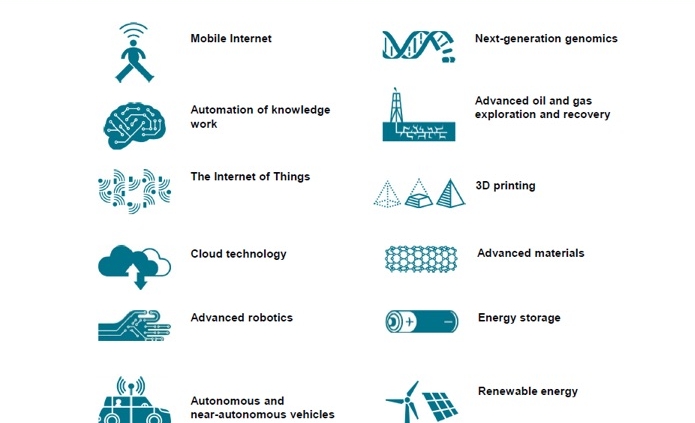Two hugely influential leaders in economic affairs, on opposite sides of the planet seem to be lacking a good model of the system to help us navigate more successfully to a brighter fiscal future.
Nobel prize-winning economist, Paul Krugman, writing in the New York Times, was honest enough to say he did not have a good model of the macro economic changes that were occurring the world as a result of technological change, and doubted if anyone else did.
Down Under, in Australia, a country that has successfully weathered the global financial crisis better than most, the Federal Treasurer Joe Hockey, is presiding over an economy heading south at a great rate of knots due primarily to some major fumbles on his part.
Hockey is responsible for setting economic policy directions for the country. This week he proclaimed in Parliament that the opportunity for Australia is in services – health services, tourism services, accounting services and property services – at the very point in time that the McKinsey Global Institute is warning that the automation of knowledge work (all services) is one of the Big 12 disruptive technologies, that are helping to drive the way our world works.
As any systems thinker will tell you, the most effective way to get the best out of a system is to be able to navigate from one good model of the system, to an even better model, as the system undergoes transformations from one stage of its development to another. The second most effective way to get the best results from a system is to have a great model of that system, and to leverage the features of the system.
Krugman’s problem is he does not have, nor does he believe anyone has, a good model of the system. He points out that technological change of the “whole digital era, spanning more than four decades, is looking like a disappointment. New technologies have yielded great headlines, but modest economic results.” “Why?” he asks.
The problem with Krugman’s model, is he appears to have conflated two, if not three stages of human socio-technological development, and called it the “digital era” when in fact we already know and recognize these stages as the Information Age (50 years), Knowledge Age (10 years), and the current Wisdom Age (which is almost over before it has even begun).
The hoped-for boost to productivity gains that Krugman seeks from investments in the latest technologies is largely negated by embedding out-of-date leadership/management approaches, coordination methods and processing techniques.
Sadly, the operating center of gravity of many organizations remains stuck in the earlier Industrial Age paradigm operating according to a command and control model of management waiting for some upstart from nowhere to finish them off in an act of what Schumpeter called “creative destruction”.
The problem with Hockey’s model is it hails from two socio-technological generations in the past, an Information Age or at best Knowledge Age view of the system. He is betting Australia’s future on an economic model that is on its way out, kind of like over-investing in the horse and buggy and buggy whip manufacturing at the start of the 20th Century, just as motor cars were taking off.
The Australian government is further damaging Australia’s future prospect by cutting investment and support for R&D in the technologies of tomorrow by both the public and private sector – with renewable energy at the top of its hit list.
Instead they are giving big tax breaks – a $20,000 instant write-off – to small business for capital equipment such as cars and computers that are no longer made in Australia, or will soon cease production.
Workshop
Here is a workshop you can use to help your organization think about the structure of future paradigms. It uses a model Maverick & Boutique has developed to help people think about the paradigm shifts that occur at increasingly shorter intervals (see image at the top of the post). We have created thus model by identifying the central scientific model or essence at the heart of current and emerging paradigms, and using the new metaphor to extrapolate from the current system to the emerging system.
We have filled in the blanks for the past three paradigms using the most appropriate metaphor that fits our observations – the computer (Information Age), the network (Knowledge Age) and the ecology/complex adaptive system (the emergent era, we have tentatively called the Wisdom Age). Just for completeness, the earlier paradigm is the Industrial Age and its’ metaphor is the machine.
Our best guess for the next paradigm is the “hologram” metaphor. This conjecture is based on what we have learned from examining the contributions to our strategic planning/future creation workshops involving hundreds of people from all walks of life, in many countries.
The task is to imagine the features of the next paradigm after the Wisdom Age, to think about and describe the kinds of technologies/tools that may be emerging as well as the coordination methods, the rules of interaction, the roles that people play using the hologram paradigm as our guide.
So what features of a hologram might be useful? We know, for example, that if you cut a hologram into small pieces and shine laser light on any piece, you get a 3-D image of the whole, just fuzzier. The means for reproducing the hologram is distributed throughout the entire hologram; just as DNA is distributed throughout every cell in an organism. Thinking about this feature, could we perhaps postulate that leadership capacity or coordination capacity might be best fully distributed throughout the system, in every person, each being capable of stepping up to a leadership role when necessary, rather than being found only in a few individuals, at a single central location (e.g the C-Suite) or at nodes (e.g. team leaders).
1. What are the features of a hologram? Thinking about what it does, how it works etc.
2. Thinking about the features of a hologram (e.g. information distributed throughout the whole of the hologram), how could we interpret this for each of the following features of a socio-technological system – the technologies (tools, technologies, processes, techniques etc.), roles (jobs), rules (rules of interaction, co-ordination or leadership methods), relationships (structure, systems)?
3. Test: How well do the features of the new paradigm align with each other? How well do the features evolve from one paradigm to the next? What inconsistencies are there? What earlier features now inconsistent and need revision?
4. Improvements: What improvements could we make to the model that resolve the inconsistencies within the new paradigm and across paradigms for each feature?









Leave a Reply
Want to join the discussion?Feel free to contribute!